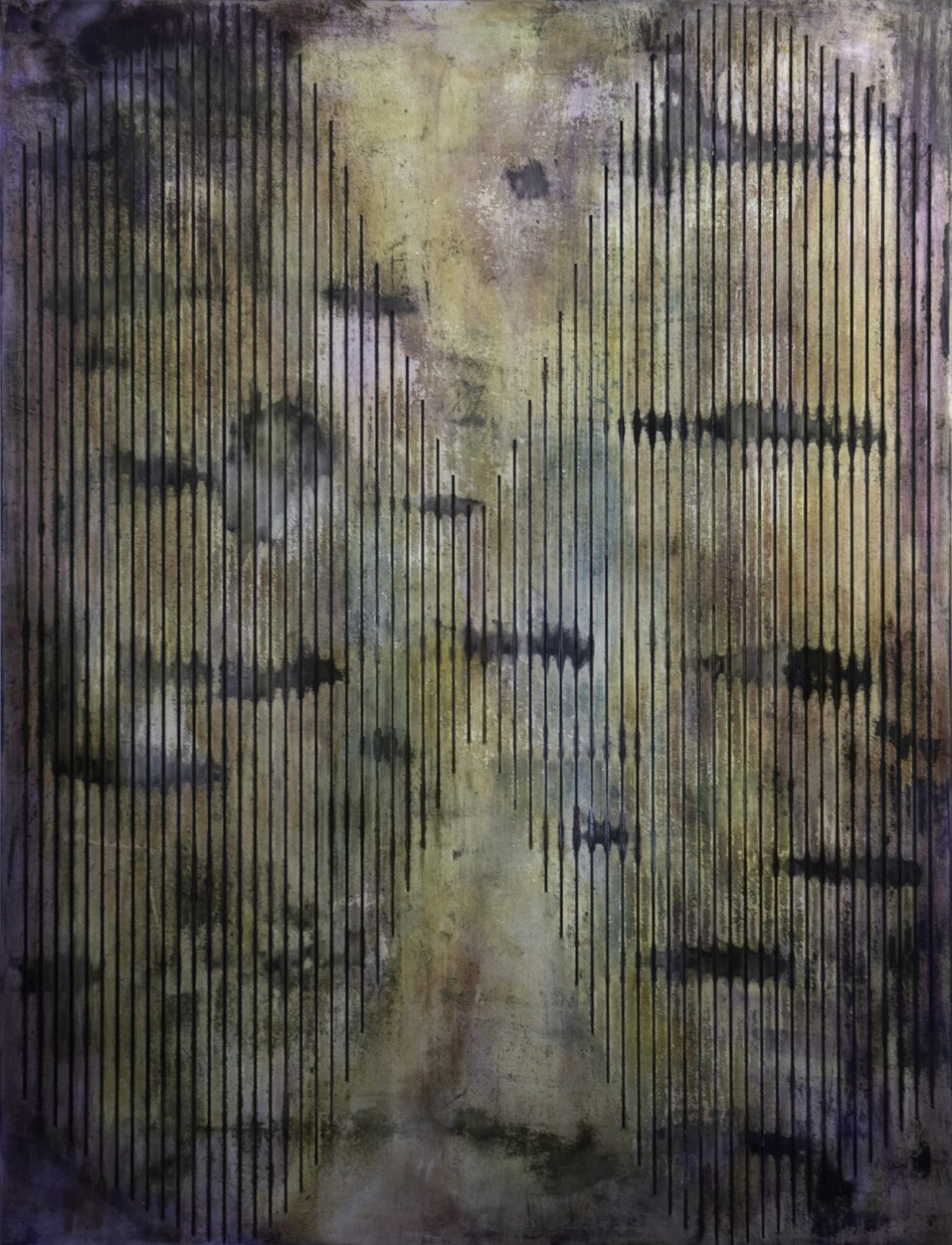Here, we ask an artist to frame the essential details behind one of their latest works.
Bio: Eto Otitigbe, 45, Brooklyn and Philadelphia (@etootitigbe)
Title of work: Don’t You Know That Eye Can Read Your Eyes (2022).
Where to see it: “Materiel Remains” at Morton Fine Art Gallery (52 O St NW, #302, Washington, DC) until June 28.
Three words to describe it: Chemistry, polyvisual, medusa.
What was on your mind at the time: Rummaging through my past and trying to get out of my own way. I wanted to create an image that was about seeing through darkness.
An interesting feature that’s not immediately noticeable: Below many thin layers of acrylic paint is an engraved aluminum plate that was treated with a fluid wash of gun-blackener, which brings with it associations to industry and weaponry. There are a few areas where I removed the acrylic paint and you can see the base layer of metal along with subtle reflections of ambient color and light. The color palette is inspired by syntax highlighting color schemes that are used in software programming languages. This color scheme in particular favors green as a base color alongside other saturated colors that create a sort of electrified static against dark black computer screens. Each color is representative of a unique way that language functions while scripting computer code.
How it reflects your practice as a whole: My process starts with drawing linear patterns-abstractions, or abstract-actions, of structural elements from my previous sculptures and public art projects. Rearranging or remixing prior blueprints expands the visual language of each project and conjoins them. Using software and digital fabrication, the drawings are carved into aluminum plates. I work with artists who run machine shops allowing for detours from the computational blueprints. During the engraving process, machines are stopped, and adjusted, toolpaths are changed; resulting in improvised variations. This process creates branches of work as the concept drawing is met with formal concerns raised by the material. Sanding occurs between each layer to create a sense of visual tension between the carved lines and liquid forms. Likened to a kind of excavation, the engraved lines fluctuate between visibility and invisibility among the layers of acrylic and gun blackened.
One song that captures its essence: I keep looking at and looking into this piece. Siba Dub Plate sets the tone for this kind of introspective journey.
